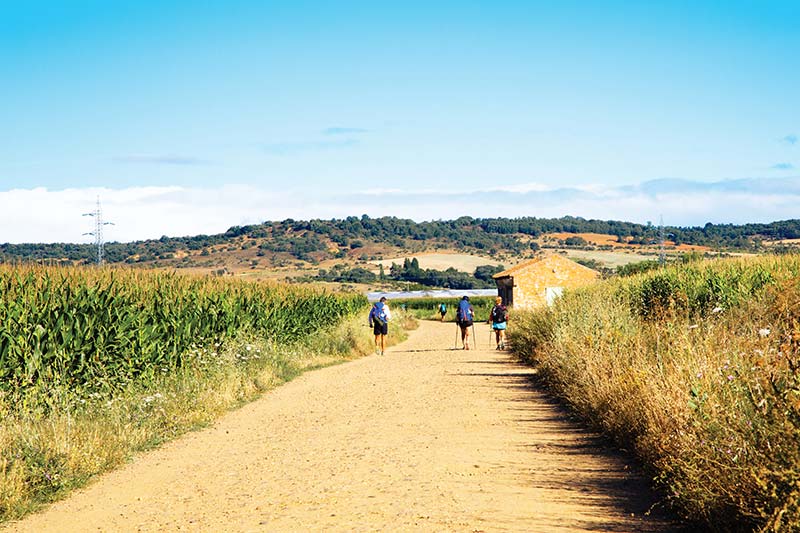
In my many returns to the Camino since my first trek in 1995, I heard a common lament from secular and religious pilgrims alike: that they were in such a hurry to find a bed, and reliant on guidebooks that did not point out the significance of what they were walking past, that they missed many of the Camino’s most meaningful elements.
I wrote this guide to the Camino Francés—the most popular branch of a vast network that crisscrosses Spain, France, Portugal, and really all of Europe, destined for the holy city of Santiago de Compostela in northwestern Spain—to fulfill this desire for context and connection. I set out to answer not only practical questions (where should I stop for lunch?) but also deeper, cultural ones (why do locals in Basque Country hang bundles of thistle on their doors, and what do the Camino’s Black Madonnas represent?).
I also know how much pilgrims enjoy food and wine, topics that are glossed over in other Camino guides. In these pages, I’ve called out my favorite dishes, from succulent fresh-caught seafood to hearty stews, along with the best local restaurants that serve them.
The result is a book that balances crucial practical details with thoughtful insights and enriching experiences. In each chapter you’ll find:
Highlights that point out places and experiences that are not to be missed, such as tasting tapas in León’s Barrio Húmedo, waking up for sunrise on O Cebreiro mountain, and making a detour to the enigmatic octagonal church of Eunate.
Starting points, and detailed recommendations for how to reach each one, if you (like many pilgrims) aren’t able to complete the entire trek.
Recommended overnight stops, chosen either for their ideal location or for an exceptional experience that adds depth to the pilgrim journey, such as sung prayer with the nuns who run the Albergue de Santa María in Carrión de los Condes, or the delicious farm-to-table dinner at Albergue Vieira in San Martín del Camino.
Route options that help you decide what to do when the trail forks, whether you prefer to stay on a supported section near a highway, or take a quieter, more remote path with fewer cafes and accommodations. This section also alerts you to worthwhile sights that many travelers miss because they are not well marked or require a short detour off the trail.
Local food and wine callouts that highlight regional specialties and the best places to taste them, and a list of local markets so you can easily plan your journey around these festive weekly events.
Folklore callouts that describe the sacred traditions that are distinct in each region of the Camino, with a special focus on pagan rituals that have influenced modern Christian traditions. (Many churches that were built over pre-Christian sites retain elements of the older pagan forms. These are fascinating to behold—if you know where to look—and I make sure to note them so that you do.)
I also fold into these pages another aspect I have learned about pilgrimage: It is not only a sacred engagement but also a great adventure. No matter who you are—secular, spiritual, or religious—walking along the Camino’s dirt paths, through medieval villages and beautiful wild landscapes, becomes simultaneously a journey of insight and transformation and an exhilarating physical challenge.
The Camino is in many ways the act of reclaiming a sense of wonder and beauty in one’s life. It is a great road of transcendence open to all and barred to none; a walking meditation punctuated by churches, chapels, shrines, streams, hills, mountains, rivers, and valleys. More than anything, the Camino is an experience to be savored, not rushed. This book helps you to slow down the journey, so that you discover the Camino at its best.
—Beebe Bahrami